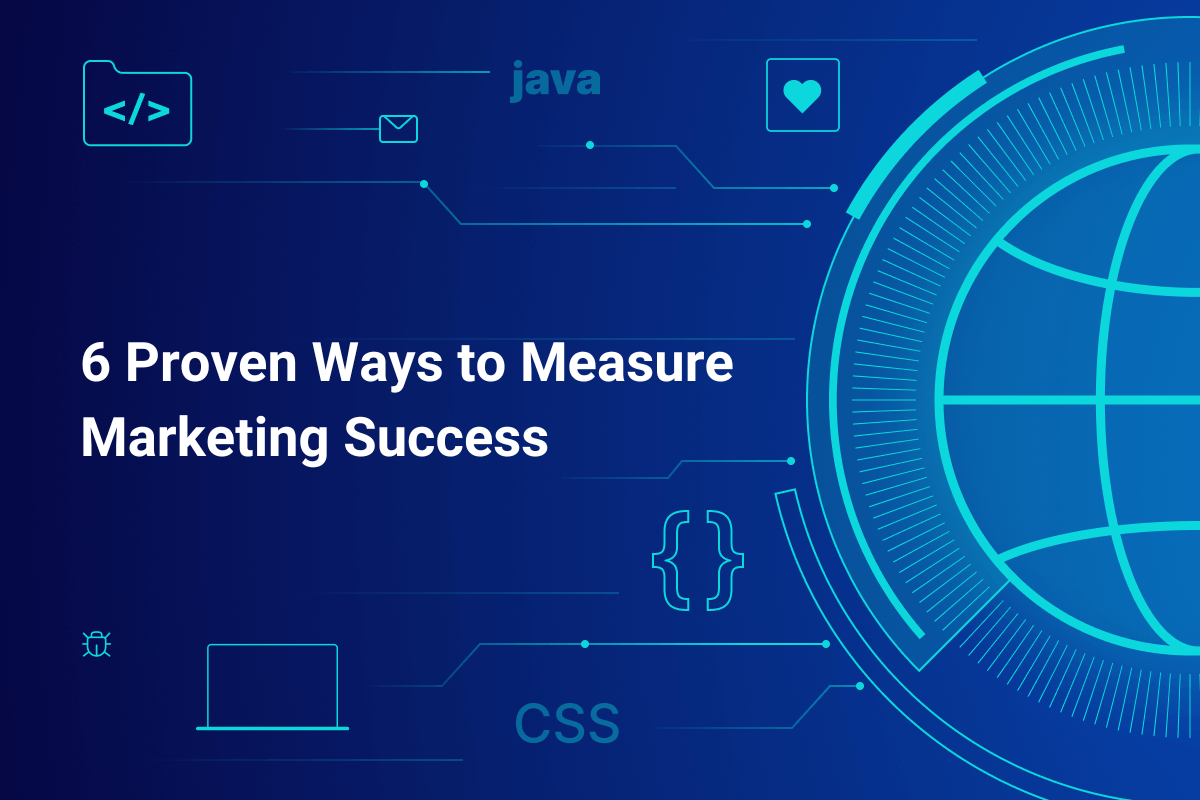To measure or not measure – is there even a question? In 2024, it seems that “to measure or not to measure?” is not even a question you can afford to ask. That being said, measuring the impact of marketing activities can still be challenging not only from a technical perspective (how to measure?) but also strategically (what to measure?).
That makes it even more shocking when a recent survey found that just over four in ten marketers professed that their business didn’t carry out effectiveness analysis more than once annually. How can you know if your marketing efforts are effective—and change what’s not working—if you’re totally in the dark?
On top of that, this makes it very challenging for CEOs and marketing decision-makers to have a clear measurement of your marketing’s success. Here are six proven ways to do just that.
Setting the Stage: Understanding Qualified Leads
Before we dive into the tracking tactics, we need to have accurate and agreed upon definitions of what it is we are tracking.
Lead generation is an essential goal of B2B marketing and acts as the first sign of how well a marketing activity is doing. Think of it as the art of pulling in folks interested in what you’re selling.
You usually see how well your lead acquisition efforts are doing by looking at metrics like Cost Per Lead (CPL) or Cost Per Action (CPA). These metrics offer a clear, quantitative view of the investment required to attract each potential customer—whether that’s through creating a free account for a software trial or other actionable engagement designed to foster interest.
But here’s the thing: not every lead is going to be your next big customer. The real skill is figuring out which leads are just browsing and which are ready to buy—those are your qualified leads. A qualified lead shows interest and possesses the potential and authority to purchase (intent) while matching your Ideal Customer Profile (ICP).
Defining what qualifies a lead for your company involves understanding your ICP—identifying their needs, behaviors, and decision-making processes—as well as those intent signals previously discussed. This critical step sets the stage for effective measurement. It takes lead generation from just collecting names to a smart strategy that focuses your efforts on the leads most likely to buy and ensures your marketing budget is spent wisely. It also sets the stage for what’s next.
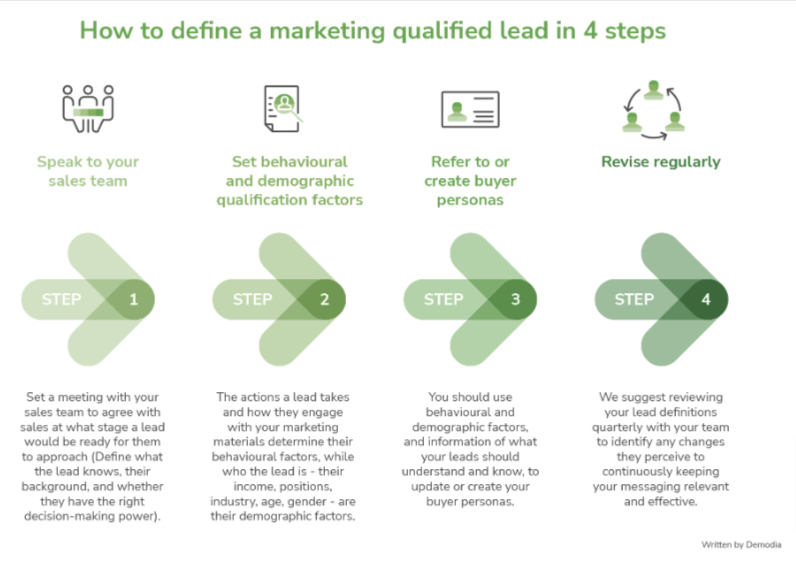
6 Proven Ways to Measure Marketing Success
1. Measuring Qualified Leads
To accurately measure the quality of leads, you must first define what, exactly, constitutes a qualified lead for your business. Here’s how to do it:
Identify Your MQLs
Start with casting a wide net to catch all potential leads. The magic happens when automated marketing tech steps in to sort out Marketing Qualified Leads (MQLs) that are based on your Ideal Customer Profile (ICP) and clear intent signals. Think of it as finding those who not only fit the bill, but also show genuine interest in what you’re selling.
Once identified, marketing’s role is to nurture these qualified leads through targeted content, personalized email campaigns, and strategic engagement initiatives. Marketing supports the sales team by not only delivering leads, but ensuring these leads are ready and willing to move through the sales funnel and convert.
Validate with BANT
Now, your sales team gets in on the action, taking those MQLs and putting them through the BANT framework—Budget, Authority, Need, Timing. This is a deep dive to confirm that marketing’s picks are ready to go to the next step. If a lead checks all the boxes, you’ve got a Sales Qualified Lead (SQL).
Track Your Lead Qualification Rates
Here’s where we measure how many general leads become MQLs and then how many of those MQLs turn into SQLs.
Your Lead Qualification Rate is simple math: divide the number of MQLs by the total leads you initially had, then do the same for SQLs from MQLs.
This gives you a clear picture of your marketing funnel’s effectiveness at each critical junction. If you’re using different methods to qualify leads, evaluating how the lead qualification team’s performance stacks up against these alternatives is beneficial to a deeper understanding of marketing’s success.

Iterate and Improve
With your qualification rates in hand, you’re now equipped to tweak and refine. Not happy with the numbers? Revisit your criteria for MQLs or the BANT assessment. Remember, this isn’t set in stone: the market changes, your product evolves, and your understanding of your ideal customer gets sharper. Keep iterating to keep your lead qualification process in peak condition.
Conversion Rate
The other key metric to follow is your Conversion Rate, which measures how quickly leads that meet qualifications turn into actual sales through different stages of the pipeline. It’s helpful to view this rate against set targets for conversion and see how it compares with other methods for achieving conversions.
2. A/B Testing
Marketing’s role goes beyond the initial act of lead generation. It has a supportive function crucial to the sales process: crafting compelling content and developing collateral that aids the sales team in engaging prospects more effectively.
Providing content marketing resources such as targeted copy, insightful case studies, and informative whitepapers equips sales with the necessary tools to show your solution’s value and address the specific needs of potential buyers.
The impact of these supportive marketing activities on sales lead generation can be measured through A/B testing. This proven method involves comparing the performance of sales outreach efforts with and without the support of marketing materials.
These tests can reveal the added value that marketing brings to the table, highlighting how well-crafted content and other deliverables can enhance the sales process, improve engagement with prospects, and ultimately contribute to a more robust sales pipeline.
More importantly, it allows data-driven decision-making on the best ways to leverage marketing resources to bolster sales efforts and drive revenue growth.
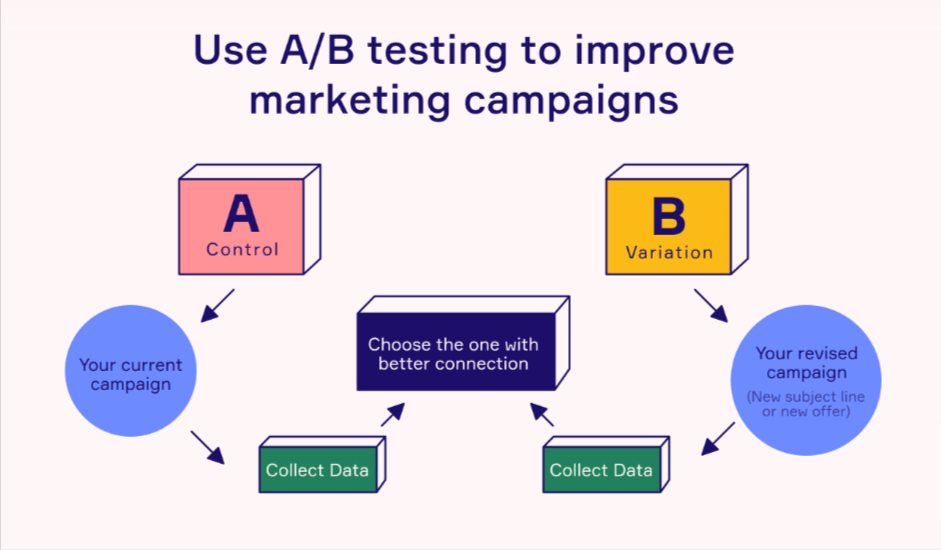
3. Assessing Brand Awareness
Brand awareness is a critical marketing facet that establishes a foundation where trust and loyalty can be built with potential customers. It’s about creating a recognizable identity for your company that resonates with your target audience, making your business top-of-mind when they are ready to make purchasing decisions.
Measuring brand awareness involves looking at metrics that indicate how familiar your target audience is with your brand. It can be quantified through:
- Social media engagement levels
- Direct traffic volume to your website
- Frequency of visits to your homepage
These indicators reflect the success of your efforts to penetrate the market consciousness and the effectiveness of your brand in attracting potential customers directly to you.
The impact of brand awareness on conversion rates cannot be understated. As your brand becomes more trusted and recognizable within your industry, you’ll likely see an increase in conversion rates, particularly from direct traffic. This is because customers who search for your brand by name come with a higher intent to purchase, having already passed through the initial stages of the buyer’s journey.
Understanding this relationship allows businesses to strategically invest in brand awareness campaigns that increase visibility and directly influence the bottom line through improved conversions.
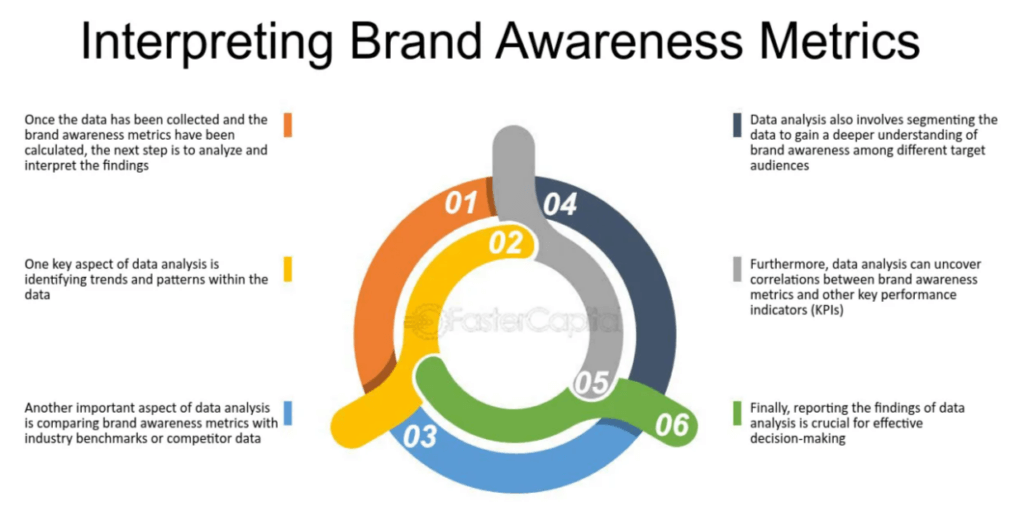
4. Measuring Marketing’s Visibility and Internal Perception
The visibility of marketing efforts within an organization is essential for aligning teams toward common goals and ensuring cohesive brand messaging. It’s vital that internal stakeholders, not just those within the marketing department, clearly understand marketing activities and their strategic purpose. This internal visibility fosters a unified approach to market engagement and supports cross-departmental collaboration.
To enhance this, companies can implement techniques that keep the entire organization informed and engaged with the marketing team’s efforts, such as:
- Regular presentations of marketing plans and achievements
- Inclusive strategy meetings
- Distributing monthly newsletters highlighting marketing successes and upcoming initiatives
But how can you measure the awareness and perception of marketing efforts among non-marketing personnel? Implementing regular internal surveys or feedback mechanisms is a practical solution.
Questions can probe stakeholders’ understanding of marketing strategies, their perceived impact on the company’s success, and suggestions for improvement.
This feedback is invaluable for helping marketing teams adjust their internal communication strategies, ensuring that marketing’s role and contributions are recognized and valued across the organization.
5. Aligning Marketing Metrics with Business Goals
The alignment of marketing metrics with overall business goals guarantees that marketing strategies are not just effective in isolation, but are driving towards broader organizational objectives like revenue growth, market expansion, and customer retention.
For example, if a primary business goal is to increase market share, marketing metrics such as brand awareness, social media share of voice, and website traffic from new regions can provide insights into progress towards this goal.
Similarly, if improving customer retention is the target, metrics like customer engagement rates, repeat purchase rates, and customer satisfaction scores become crucial indicators of success.
Companies can more effectively measure the ROI of their marketing activities by selecting and monitoring metrics that directly reflect the achievement of specific business goals. This approach facilitates strategic decision-making and ensures that marketing investments align with the company’s priorities—maximizing marketing’s impact on overall business performance.
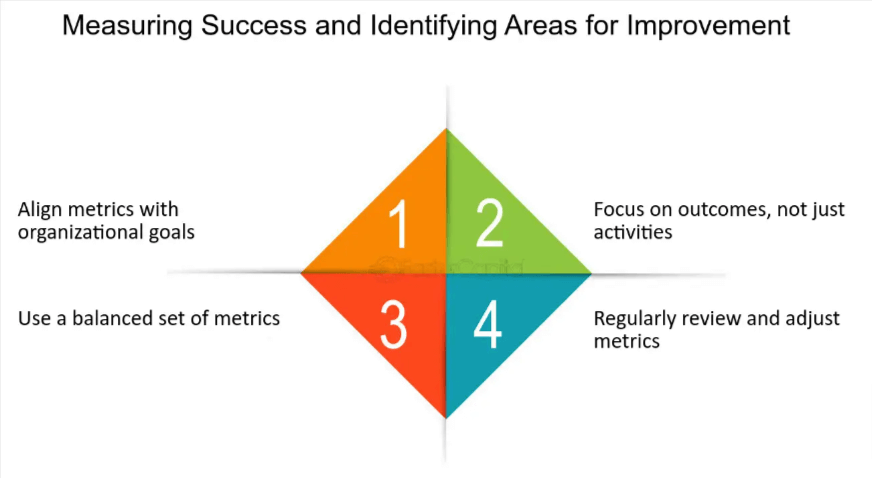
6. Utilizing Technology and Tools for Measurement
Leveraging the right tech stack can provide comprehensive insights into every part of your marketing strategy, from lead generation to brand awareness, enabling data-driven decisions that propel business growth.
Performance tracking systems such as Google Analytics, social media analytics platforms, and advanced AI-powered ecommerce platforms offer a window into user behavior, website traffic, engagement levels, and competitors’ efforts. They allow marketers to gauge the effectiveness of their content and campaigns.
CRM systems like HubSpot go a step further by tracking interactions with potential and existing customers, making it possible to measure conversion rates, lead quality, and the ROI of marketing activities.
Marketing automation tools and email marketing platforms provide metrics on open rates, click-through rates, and conversion rates from specific campaigns, helping to refine strategies for better performance.
By integrating these tools into your marketing operations, you can access a wealth of data supporting continuous optimization and alignment with overarching business objectives, ensuring that every marketing effort is measurable and impactful.
The Best Measure of Marketing Success is Growth
Measuring marketing success can sometimes be challenging for C-suite denizens and even for experienced marketers. By understanding the right methods and metrics, and leveraging the right tools, you can clearly see the bigger picture—and make data-driven decisions to align marketing strategies with key business goals.
This journey towards strategic clarity and measurable success is precisely where mvpGrow excels. As your on-demand marketing department, mvpGrow specializes in creating detailed growth roadmaps tailored to your B2B startup’s unique needs, focusing on short, medium, and long-term milestones, KPIs, and growth tactics.
To learn more about how to effectively measure marketing success and strategize for growth,
book a free consultation with mvpGrow today.

The Founder & Chief Getting Sh%T Done Officer of mvpGrow. After about 8 years as a hired hand some of the largest (and smallest) B2B SaaS companies worldwide I decided to hang up my employee slippers and lace up my growth agency cleats. But just because I’m an agency doesn’t mean we can’t chat (no charge). Please email me on any topic and I will gladly reply: eyal@mvpgrow.com

